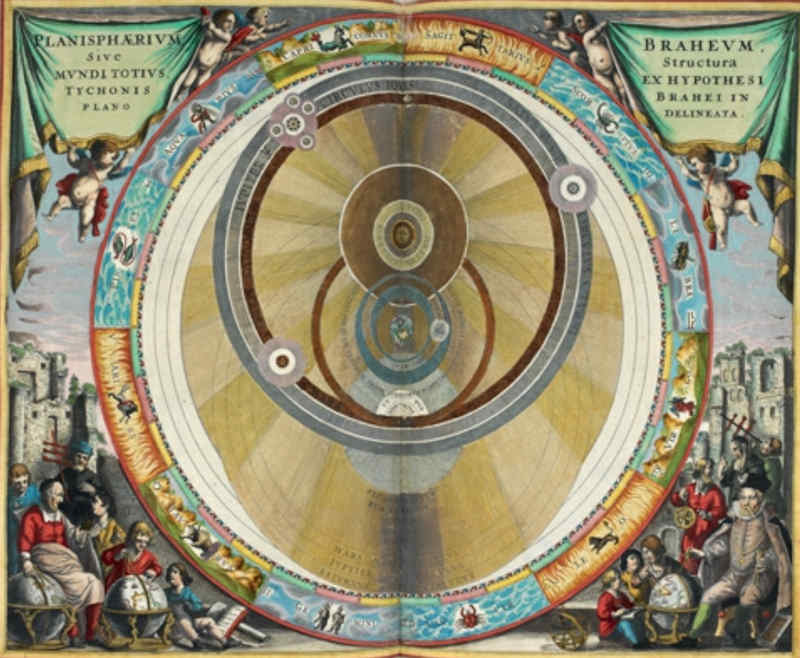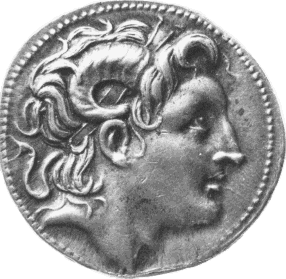|
Jerome takes some of the Bible
words describing the 'world' or the 'earth,' which are not in
themselves 'shape' words, and renders them with a shape word, globe:
"And it came to pass that in those days there went out a decree from
Caesar Augustus that the whole world should be enrolled." (Luke 2:1,
Douay-Rheims); "factum est autem in diebus illis exiit edictum a
Caesare augusto ut describeretur universus orbis" (Latin Vulgate,
Luke 2:1). The Greek word that we're starting with, οικουμενη, which
means 'household,' or the inhabited part of the earth, says nothing
about the shape of the earth, but Jerome's translation does. But it was not
uncommon for Latin authors to call the world the 'globe,' 'orbis,'
just like we do.
Does he overdo it? There are certain verses of the Bible which menace sinners with a
moving earth:
"Fear, and the pit, and the snare, are upon thee, O inhabitant of the earth.
And it shall come to pass, that he who fleeth from the noise of the fear shall fall into the pit; and he that cometh up out of the midst of the pit shall be taken in the snare: for the windows from on high are open, and the foundations of the earth do shake.
The earth is utterly broken down, the earth is clean dissolved, the earth is moved exceedingly.
The earth shall reel to and fro like a drunkard, and shall be removed like a cottage; and the transgression thereof shall be heavy upon it; and it shall fall, and not rise again."
(Isaiah 24:17-20).
"Therefore is the anger of the LORD
kindled against his people, and he hath stretched forth his hand
against them, and hath smitten them: and the hills did tremble,
and their carcases were torn in the midst of the streets. For
all this his anger is not turned away, but his hand is stretched
out still." (Isaiah 5:25).
Part of God's theophany on Sinai, and His visitation in wrathful
judgment against the people, is the earthquake:
"Then the earth shook and trembled; the foundations of heaven moved and shook, because he was wroth."
(2 Samuel 22:8).
"Then the earth shook and trembled; the foundations also of the hills moved and were shaken, because he was wroth."
(Psalm 18:7).
"The earth shook, the heavens also dropped at the presence of God: even Sinai itself was moved at the presence of God, the God of Israel."
(Psalm 68:8).
"The voice of thy thunder was in the heaven: the lightnings lightened the world: the earth trembled and shook."
(Psalm 77:18).
Just like the English word 'earth,' the Hebrew erets can mean, either the
entire planet, or the dry ground distinguished from the sea, or some portion
thereof. When we say, in English, 'the earth shook,' listeners would take this
to mean an earth-quake, not that the planet wobbled in its orbit. In a similar
vein, most of the Biblical references to the earth shaking when God came down at
Sinai, or in wrathful visitation thereafter, or at the final judgment, would be
taken as referring to violent earth-quake, the movement of the crust of the
earth with reference to its foundational layers of bedrock deep in the earth.
So the idea of the 'earth moving' verses, it seems to me, is
God's descent to contend with His people in judgment, in this case
the final judgment: "The mountains quake at him, and the hills melt,
and the earth is burned at his presence, yea, the world [tebel], and all that dwell
therein." (Nahum 1:5). There never yet has been, in times of
human habitation, a world-earthquake, though perhaps there will be at
the end times. But in addition to the 'earth-move' verses, there are also
'doesn't-move' verses, like "The Lord hath reigned, he is clothed
with beauty: the Lord is clothed with strength, and hath girded
himself. For he hath established the world [Hebrew tebel] which shall not be
moved." (laus cantici David in die ante sabbatum quando inhabitata
est terra dominus regnavit decore indutus est indutus est dominus
fortitudine et praecinxit se etenim firmavit orbem terrae qui non
commovebitur) (Psalm 93:1 Douay).
One would expect a certain
symmetry in the reading of these move/don't move verses; if the
earth trembling before the face of the Lord refers to God's wrathful
visitation in judgment, then its failure to tremble on other
occasions must refer to God's benign pleasure in His people, its
stability a gracious promise of His providence. But Jerome, likely
convinced of the Ptolemaic system as were most people of
the day, sees the "orbis terrae", the whole round globe, in the non-moving
verses, not the moving ones. In the latter, he sees no orb, just earth. In the geocentric Ptolemaic system, the
earth does not move.
We tend to see what we expect to see. When Jerome saw Bible
verses menacing a moving earth, he thought, correctly, what was in
view was the earthquake, not orbits. When he saw verses presenting
the inverse or mirror-image of this threat, he thought he saw
astronomy. Galileo might have had better luck had Jerome made a more
neutral translation.


|





